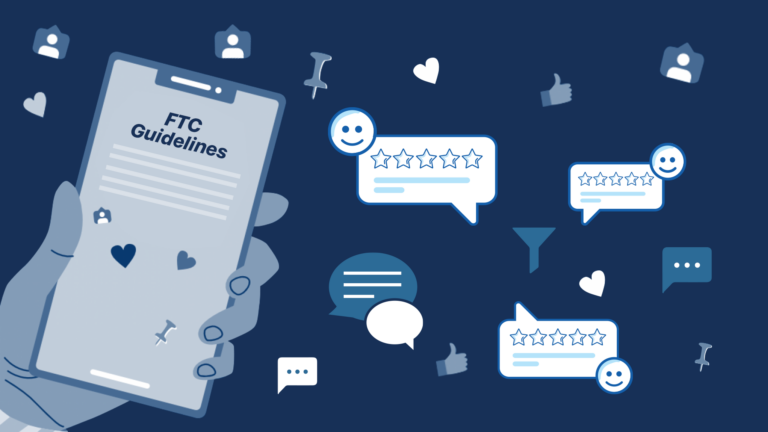Organizations that were considered customer experience leaders experienced a 183% return rate, according to a 2019 study conducted by Watermark Consulting. Brands that failed to lead in CX had a cumulative return of only 63%.
Enterprise leaders have been talking about the ROI of customer experience (CX) for decades but few have been able to implement long-term initiatives that significantly improve business outcomes. When it comes to the impact of CX, there’s no shortage of evidence to underscore just how beneficial effective customer experience programs are to a business’ bottom line.
More than five years ago, McKinsey reported there were “huge opportunities to both cut costs and grow” if businesses invested wisely in CX. At the time, McKinsey’s data showed organizations committed to improving the customer journey saw revenue jumps by as much as 10% to 15%, while simultaneously lowering the cost to serve customers by as much as 15% to 20%.
Fast forward five years: The evolving benefits of CX is staggering.
The long-term effect of positive CX
In 2019, Watermark Consulting Group published the results of more than a decades worth of research digging into the ROI of CX. After analyzing the cumulative stock return for CX leaders versus CX laggards (companies with high-ranking customer experience scores versus companies with low-ranking customer experience scores) over the course of ten years, Watermark found that CX leaders had a cumulative return of 183.3% while CX laggards saw only a cumulative return of 63.1%.
“While there are obviously many factors that influence a company’s stock price, the results of this study indicate that, over the long-term, a great customer experience helps build business value, while a poor customer experience erodes it,” wrote Watermark in its report.
According to Watermark’s findings, a company that can consistently deliver an impressive customer experience triggers customer behaviors that dramatically impact business finances in two critical ways: Revenue growth and expense control.
What is CX?
Experience.com has seen comprehensive CX programs dramatically elevate business outcomes time and again. Before we share one of our favorite CX success stories, it’s worth taking a moment to define what a comprehensive CX strategy looks like. CX, or customer experience, involves all the touchpoints between a brand and its customers and prospects both offline and online. It is the full breadth of the customer journey, from discovery to purchase and beyond.
The value of customer experience is far reaching — it directly influences brand reputation, customer satisfaction ratings and Net Promoter Scores. It can have a major impact on customer loyalty, revenue, operating costs, long-term growth and short-term outcomes.
How to build an effective CX strategy
Experience.com CEO Scott Harris outlines the primary components of a successful CX strategy, or what Experience.com defines as CX 2.0, in his book “Create WOW Customer Experiences.” Among these components:
- Focusing on the most impactful customer interactions.
- Automating customer interactions whenever possible.
- Escalating and resolving customer issues.
- Collecting and sharing customer feedback.
Experience.com client New American Funding (NAF), a mortgage lending firm headquartered in California with more than 180 locations across the country, is one of many companies that experienced dramatic results after implementing the CX 2.0 strategy covered in Harris’ book.
In the world of mortgage lending firms, customer reviews are key to helping loan officers build trust in the communities they serve. Initially, NAF had a system for collecting customer reviews, but had not yet rolled out a sophisticated CX strategy.
“We were lucky to convince Rick and Patty Arvielo, the founders of New American Funding, to run a pilot so we could show them the impact of a good CX 2.0 program,” writes Harris. NAF wanted a way to manage their online reputation and turn their happy customers into their #1 marketing asset. Experience.com designed a CX strategy centered on collecting and sharing customer feedback.
By implementing Experience.com customer experience platform, NAF was able to automate data connections so that customer review requests happened automatically. Partner survey requests were also automated and sent at the time of funding to get feedback from real estate agent partners. Customer reviews were automatically shared across NAF’s online properties, including the company website, social channels and relevant third-party review sites. NAF was also able to access customer reviews from all locations — including Google and Facebook — via a single dashboard so that the team could monitor and respond to reviews in a timely manner.
The results? Before implementing a comprehensive CX strategy, NAF had fewer than 4,000 reviews across sites like Zillow, Google and BBB. Two years later, after implementing and committing to a comprehensive CX strategy, NAF had gained nearly 95,000 reviews across its own site, Zillow, Google My Business (GMB), LendingTree and Credit Karma, earning an average score of 4.88 stars and a Net Promoter Score of 89.
CX is changing how the marketing organization functions
New American Funding’s results are not isolated. Study after study shows marketing organizations are seeing positive results when they invest in strategic customer experience programs. As far back as 2011, Oracle’s Customer Experience Impact (CEI) Report found that 86% of customers would pay more for a better customer experience.
Spiegel Research Center, an academic institution focused on the principles of effective advertising, analyzed the influence of online reviews on purchasing decisions. The academic research group found that displaying customer reviews could increase conversions by as much as 380% for high-products: “When reviews were displayed for a lower-priced product, the conversion rate increased 190%. However, for a higher-priced product, the conversion rate increased 380%.”
According to Deloitte’s recent Global Marketing Trends report, CMOs are most effective when they own an organization’s innovation road map and customer experience.
“It’s no coincidence that these two aspects go hand in hand — the only way to truly address human need is to look at it through the eyes of the customer,” writes Deloitte, “CMOs can leverage their insights into customer behavior and expectations to guide the choice of beneficial business partnerships while embedding customer feedback into the digital ecosystems they design.”
In other words, implementing a customer experience platform that not only captures and provides a 360-degree view of the customer journey, but also offers digital, automated capabilities, is crucial to the marketing organization’s success.
“CMOs are the C-suite’s best-positioned executives to realize long-term customer value and bottom-line business results by building best-in-class customer experiences and lasting customer relationships,” writes Deloitte in its 2020 Course correcting the evolution of the CMO report. The research firm goes on to say that customer experience and relationships are “foundational” to the brand building and growth driving activities that can enable the CMO to be a “truly transformational member of the C-suite.”
The ultimate CX strategy: Where to go from here
No matter where you are when it comes to your organization’s CX maturity level, there’s likely still room for improvement. The first step is to take stock of your current CX practices: Can you track the full customer journey? Where are the primary touchpoints with your customers? Also, which business units own those touchpoints and is customer feedback being shared across the organization?
By conducting an audit of your existing customer experience programs, you can better identify your strengths and weaknesses and find the gaps that are costing you critical business opportunities. Once you’re able to track the full customer journey and locate every customer touchpoint, you can begin to build a holistic CX program, automating CX tactics and integrating customer experiences into various business functions that help move the needle and deliver measurable business outcomes.

















